Recent Storm Damage Posts
The Importance of SERVPRO's Emergency Board-Up Services After a Tree Falls on Your Roof
9/17/2024 (Permalink)
When a tree falls on your roof, the damage can leave your home exposed to the elements, pests, and further structural issues. Acting quickly is essential to protect your property from rain, wind, and potential intruders. That’s where SERVPRO’s emergency board-up services come in.
SERVPRO responds 24/7 to secure your home, covering exposed areas like broken windows or large roof openings. By boarding up the damaged sections, SERVPRO prevents additional water damage, keeps your home safe, and allows time for more permanent repairs.
If a tree falls on your home, don't wait—call SERVPRO immediately. Our fast, professional board-up service will help safeguard your home and give you peace of mind until full repairs can be made.
Burst Water Pipes
1/24/2023 (Permalink)
Did you know that Wisconsin’s harsh winters and cold weather can affect your home or business in more ways than just raising your heating bill? Freezing cold temperatures can freeze the water inside your pipes, expanding the pipes, and causing them to burst open and gush water throughout your home.
The good news is that there are many helpful tips to prevent your pipes from freezing in the first place. The easiest tip to try and implement to your home, is to trickle the water in your sinks and showers, as well as running any other forms of water frequently, like washing machines and dishwashers.
Another tip is to ensure that all pipework in and around your home is adequately insulated with the appropriate insulation solution, as well as exposing pipes inside your home to the warm air dispensed through your furnace by opening cabinets under your sink.
In the event of pipes bursting, SERVPRO of Brown County is fully staffed and trained to take care of you and your home. If you have any questions or concerns, feel free to give us a call at (920) 434-8224.
Preparing our kids for storms
9/10/2021 (Permalink)
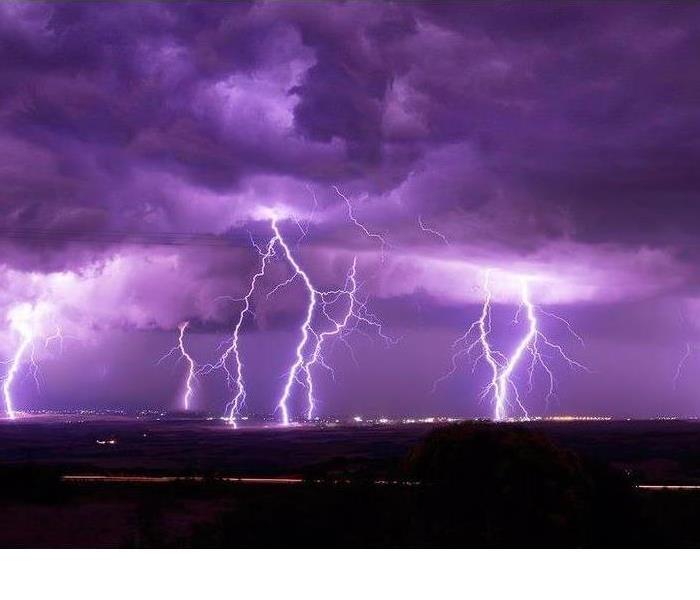 Storm Preparation
Storm Preparation
Brown County experienced more than its fair share of storms throughout this summer.
As an adult, we tend to develop ideas over the years of how we should prepare our place of residence for natural disasters that commonly frequent the State of Wisconsin. One important matter that may get overlooked during the preparation process is forgetting to include the younger members of the family as part of that procedure.
Kids and teens should learn invaluable techniques to better equip them for a variety of severe weather disturbances or everyday household disasters. Taking the proper precautionary steps to formulate an emergency plan could help reduce any occurrence of anxiety when such unexpected events transpire.
Some helpful tips on how to prepare your children for natural disasters include:
- Offer them facts on the typical weather developments for our region or emergencies that would generally involve first responders being dispatched.
- Focus on types of hazards that could affect the home: a place to seek immediate shelter in the event a tornado develops or prompt evacuation as a result of a fire.
- Create then test out your family disaster plan. Just as your child practices fire drills at school, disaster drills at home are an excellent way to review what to do during a crisis. Model the exercise for your children and then have them participate either monthly or every few months to see if revisions should be made to your established plan.
These above examples are one way to assure your loved ones every precautionary measure is being made to keep them safe during what could be an incredibly disastrous period.
Another thing you may want to implement into your planning process is a backup plan where the younger members of the family know how to best assist you if you’re distracted by certain emergency matters. You may have your hands full with trying to divert water from overflowing in your basement or distinguishing a fire that suddenly erupts from an electrical matter. Other times you may become injured and need some type of medical assistance. Knowing your kids have the right resources in place could not only help get your household back on their feet but ease their mind because you prepared them for such events.
Your families primary focus should be more on keeping everyone safe. Let the trained technicians at SERVPRO of Brown County take some of the worries off your hands by clearing out the damage to your residence.
SERVPRO of Brown County offers:
Restoration work following storms or interior damage to your home is a cornerstone of the SERVPRO business. Give our trained technicians a call at, (920) 434-8224.
Storm Damage
9/1/2021 (Permalink)
When you live in the State of Wisconsin, you learn to adapt to the way the seasons change faster than you can blink. One moment you're bundled up in a winter coat with at least three layers underneath it. Then the next minute, you are cranking up the air conditioner trying to keep cool because the temps reached a record high in a month that we typically experience freezing temps.
Just think about all that your house endures with those swift climate changes. We want the dwelling we live in to withstand any natural disaster. Our treasured belongings stay stored within those walls, as well as those mementos occasions we create with loved ones. Not taking all of the proper precautions to keep our home up to code could leave us without those cherished keepsakes, making new memories and at a substantial financial loss.
While various factors can damage our home's foundation - earthquakes, extreme temperatures, tree roots; moisture is the number one culprit that weakens and compromises the home's base.
Once water collects around your house from rain, snow, or burst pipes, the saturated soil around the foundation expands and shift — the pressure on the foundation walls increases and results in cracks. Leaks form allowing water to penetrate the foundation and cause electrical hazards, mold growth, and structural damage to the house.
There are a few precautionary measures you could take to lessen the chance of your home enduring such structural damages.
- Clean rain gutters: Inspect your gutters or schedule a licensed professional to clean them annually. A clogged rain gutter can send water cascading down the exterior wall, which can result in water entering the interior walls.
- Roof maintenance: Where rain is concerned, the roof is the first line of defense. Regular maintenance can preserve the life expectancy of your home's roof.
- Window repairs: Proper window installation and maintenance is imperative. Leaks in your windows could be the result of poor maintenance or missing caulking.
At SERVPRO of Brown County, we make it OUR business to respond to storm damage immediately. If your property is struck unexpectedly by a storm or natural disaster, we will work quickly and efficiently to fix the problem and get your life back on track.
In the event of your house sustains significant weather-related damages, call our trained technicians at Brown County SERVPRO.
We're available 24 hours a day, seven days a week at 920-434-8224.
keeping your pets safe in case of house fires
8/4/2021 (Permalink)
 Keeping our pets safe!
Keeping our pets safe!
Keeping your pets safe in case of house fires!
If you must leave and go to a shelter it’s important to understand, you most likely will not be able to bring pets with you to a public shelter. There are usually separate shelters set up for pets.
Regardless, it’s a good idea to prepare an emergency evacuation kit for your pets in case you need to leave your home quickly.
The National Fire Protection Association (NFPA) has a list of items you will want to include in your pet’s evacuation kit:
- Copies of Vaccination Records
- Medication or a List of Needed Medications
- Lists of Any Special Needs or Allergies
- Ownership Records (things like adoption paperwork, microchip paperwork registration papers, or at least photos of you with your pets)
- Leashes, Harnesses, Collars and/or Carriers
- Pet Food and Treats (enough for each pet for 3 to 7 days)
- Water (enough for each pet for 3 to 7 days)
- Bowls
- Cat Litter and Box
- Dog Waste Bags
- Toys
- Blankets
- A Pet First Aid Kit (including cotton bandage rolls, bandage tape, scissors, antibiotic ointment, medical-type gloves, isopropyl alcohol and saline solution)
- Cleaning Supplies (in case your pet has an accident)
- List of Important Phone Numbers (including your veterinarian, local animal shelters, local pet-friendly hotels, local animal control, local pet boarders)
At SERVPRO of Brown County, our pets are our family and we know it’s the same for many families in the Green Bay Area. Be sure to plan ahead to keep those four-legged family members safe!
Storm Damage
7/29/2021 (Permalink)
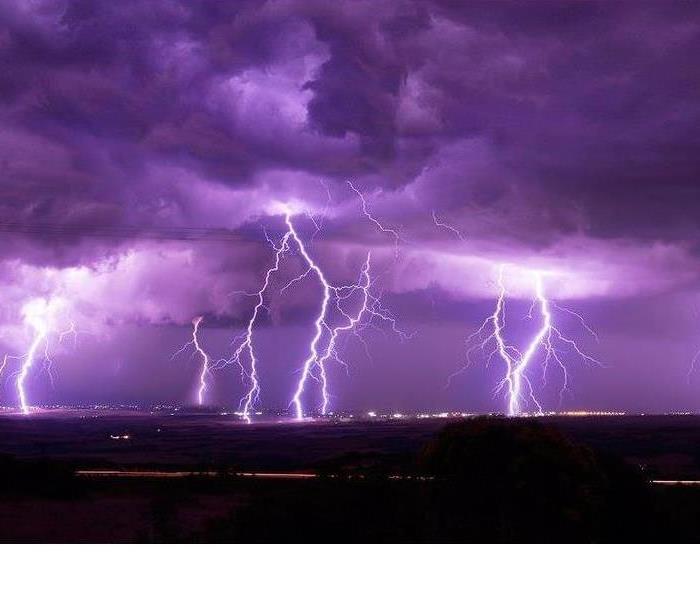 Storm Damage
Storm Damage
If you live or work in Northeast Wisconsin, you’ve no doubt been affected in some way by the recent, intense rain storms we’ve been experiencing. Whether it’s a slow commute due to flooded streets, or worse, flooding in your own home or business, it’s been a difficult few weeks for everyone in the Green Bay area.
It’s no surprise that, in our line of work, the SERVPRO of Brown County Team has been faced with a lot of hard work thanks to the extreme weather.
We have received numerous calls each day from people across the area asking for help with flooding in homes and businesses. Our technicians have been working around the clock to help those who need it.
Our staff is highly trained in property damage restoration. From initial and ongoing training at SERVPRO’s Corporate Training Facility to regular IICRC industry certifications, rest assured our staff is equipped with the knowledge to restore your property. Our training program includes the following:
- IICRC Training
- Employee Certification Training
- Initial Franchise Training
- e-Learnings
- Continuing Education Classes
In any unexpected event, SERVPRO is here to help! Give us a call at 920-434-8224.
Storm Damage
6/21/2021 (Permalink)
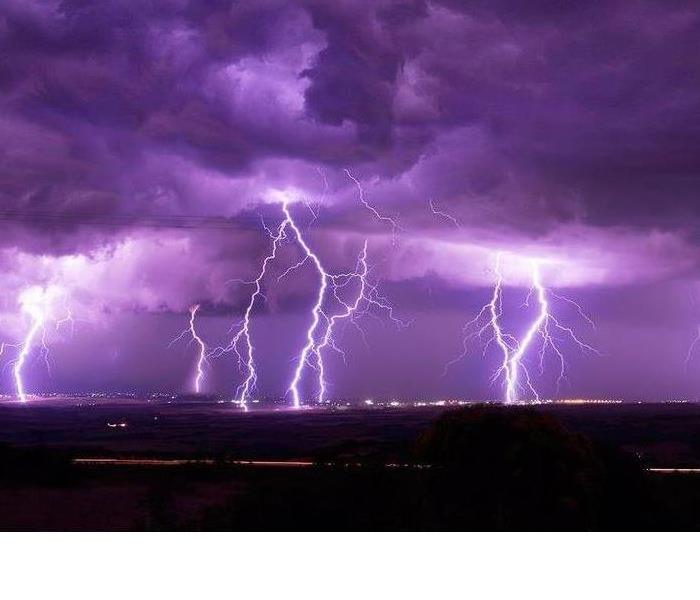 Lighting
Lighting
Did you know lightning strikes occur in the United States about 25 million times each year?
That statistic is according to the National Weather Service, or NWS, and is especially important to think about this time of year. According to the NWS, lightning is more likely to strike during the summer months, although it can happen any time of year.
The NWS says about 47 people, on average, are killed by lightning strikes, with hundreds more being injured.
Fortunately, there are ways to keep yourself safe.
If you are at home, the National Weather Service has several tips to stay safe:
- Stay off corded phones (you CAN use cell phones).
- Avoid plumbing: do not take a shower or wash your hands.
- Stay away from windows and doors.
- Do not lie on concrete floors or lean against concrete walls.
- Bring your pets inside.
- Remember that typical surge protectors will NOT protect against surges caused by lightning strikes.
If you are unable to get to shelter, the NWS advises you take these steps:
- Avoid open fields and hilltops.
- Stay away from tall, isolated trees or objects
- Stay away from water.
- Try to get into a low-lying area or keep heading toward shelter.
- If you’re in a group, spread out to avoid a strike hitting multiple people.
It’s unfortunate we know the damage, but luckily, we also know how to fix a lot of that damage. Our crews have the knowledge and experience to help you recover if the unthinkable happens. Just give SERVPRO of Brown County a call at 920-434-8224.
March is Red Cross Month!
3/4/2021 (Permalink)
 March is Red Cross Month!
March is Red Cross Month!
March is Red Cross Month!
When disasters strike anywhere in the nation, you can almost always count on the fact volunteers from the American Red Cross will mobilize in that distressed area to help with recovery. Join the Red Cross mission by volunteering, giving blood, learning lifesaving skills or making a financial donation.
Throughout the month of March, we honor people who make the lifesaving mission of the American Red Cross possible — the individuals across the country who turn compassion into action, helping others in times of crisis. Our Red Cross Month celebration has been an annual tradition since 1943, when President Franklin D. Roosevelt issued the first Red Cross Month proclamation.
One year of COVID 19:
Americans continue stepping up to address urgent needs. In the year since the World Health Organization declared COVID-19 a global pandemic, tens of thousands of Americans have stepped up to address the needs of those reeling from the pandemic as well as record-breaking disasters across the country.
Americans experienced more billion-dollar disasters in 2020 than any other year on record, and for many, the pandemic compounded the trauma and financial strain of disasters: struggling families needed help quickly and faced more hurdles to recover, as increased anxiety exacerbated many health and mental health needs.
Join the Red Cross mission by volunteering, giving blood, learning lifesaving skills or making a financial donation. Give back by donating, volunteering or giving blood on Red Cross Giving Day, March 24
For more information on the Red Cross and how you can get involved, you can visit redcross.org.
When Lightning Strikes
9/15/2020 (Permalink)
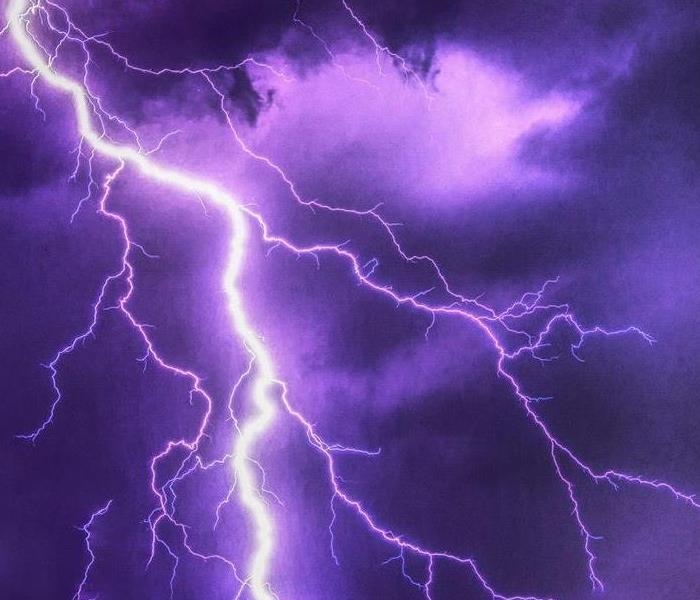 When Lightning Strikes!
When Lightning Strikes!
Did you know lightning strikes occur in the United States about 25 million times each year?
The NWS says about 47 people, on average, are killed by lightning strikes, with hundreds more being injured.
Fortunately, there are ways to keep yourself safe.
If you’re able, the first piece of advice is to find shelter, preferably inside your own home.
If you are at home, the National Weather Service has several tips to stay safe:
- Stay off corded phones (you CAN use cell phones).
- Avoid plumbing: do not take a shower or wash your hands.
- Stay away from windows and doors.
- Do not lie on concrete floors or lean against concrete walls.
- Bring your pets inside.
- Remember that typical surge protectors will NOT protect against surges caused by lightning strikes.
Lightning is hotter than the surface of the sun, reaching temperatures of around 50,000 degrees Fahrenheit.
And that hot, hot heat CAN cause fires. About 24,600 fires are caused by lightning in the United States each year, according to the NWS. Of those, about 4,400 are house fires.
In our line of work at SERVPRO of Brown County we know just how much damage house fires can do. They can be devastating for families.
It’s unfortunate we know the damage, but luckily, we also know how to fix a lot of that damage. Our crews have the knowledge and experience to help you recover if the unthinkable happens. Just give us a call at 920-434-8224.
Preparing for Natural Disasters
9/9/2020 (Permalink)
Natural disasters include tornadoes, floods, wildfires, earthquakes, and hurricanes. Man-made disasters include events such as power outages, arson, terrorist attacks, and radiation threats. Some of the steps a family can take to prepare for an emergency are the same for either a natural or a man-made disaster. For example, a well-stocked medical supply kit is valuable regardless of the type of disaster.
A comprehensive family disaster plan should, at the bare minimum, address the following 10 items.
1.Identify Hazards in the Home.
2. Obtain First Aid Supplies and CPR Skills.
3. Establish a Disaster Meeting Place and Family Contact.
4. Develop Adequate Water Storage.
5. Prepare a Food Supply.
6. Store Emergency Supplies.
Basic emergency supplies should include the following.
- Power flashlight and extra batteries
- Battery-powered radio
- Prescription medicines and vital over-the-counter medicines
- First aid kit
- Toiletry articles
- Filtered masks for nose and mouth
- Infant and small children’s needs (if appropriate)
- Fire extinguisher
7. Develop an Emergency Evacuation Plan.
8. Prepare for Disaster in a Vehicle.
9. Prepare for Disaster at Work or School.
10. Practice, Modify, and Maintain the Plan.
In an unfortunate situation that you may need help in clean up, SERVPRO of Brown County is here to help. We are here 24/7, 365 days a year, give us a call at 920-434-8224
How to Prepare for a Storm
9/2/2020 (Permalink)
Taking proactive steps to protect your family and property from severe storms before they hit can save lives and minimize damage to your home or business.
The first step is to create a written disaster plan and review it with everyone in your family. Make sure everyone knows where to go and what to do in case of an emergency. Identify an emergency meeting place, such as a park, building, or other landmark near your home. If you get separated during the storm, have everyone meet at the designated location.
It is smart to assign an out-of-state friend or relative to be your family’s emergency contact person. Teach all of the adults and responsible children how to shut off utilities in your home. Shutting off gas and water mains can decrease your risk of additional damage.
To prepare for a storm, each family should have an emergency kit.
Since you may have to evacuate on short notice, pack your emergency kit into backpacks and have them ready to go. Everyone in the family should know exactly where the emergency kits are located.
Your emergency kit should contain:
Your families primary focus should be more on keeping everyone safe. Let the trained technicians at SERVPRO of Brown County take some of the worries off your hands by clearing out the damage to your residence.
SERVPRO of Brown County offers:
Restoration work following storms or interior damage to your home is a cornerstone of the SERVPRO business. Give our trained technicians a call at, (920) 434-8224.
Storm Damage
8/19/2020 (Permalink)
SERVPRO of Brown County specializes in storm and flood damage restoration. Our crews are highly trained and we use specialized equipment to restore your property to its pre-storm condition.
Faster Response
Since we are locally owned and operated, we are able to respond quicker with the right resources, which is extremely important. A fast response lessens the damage, limits further damage, and reduces the restoration cost.
Resources to Handle Floods and Storms
When storms hit the Green Bay area, we can scale our resources to handle a large storm or flooding disaster. We can access equipment and personnel from a network of 1,650 Franchises across the country and elite Disaster Recovery Teams that are strategically located throughout the United States.
Have Storm or Flood Damage? Call Us Today 920-434-8224.
Preparing for a storm in our Green Bay Community
8/10/2020 (Permalink)
Creating Your Storm Safety Plan
The first step is to create a written disaster plan and review it with everyone in your family. Make sure everyone knows where to go and what to do in case of an emergency. Identify an emergency meeting place, such as a park, building, or other landmark near your home. If you get separated during the storm, have everyone meet at the designated location.
It is smart to assign an out-of-state friend or relative to be your family’s emergency contact person. Teach all of the adults and responsible children how to shut off utilities in your home. Shutting off gas and water mains can decrease your risk of additional damage.
Steps You Should Take to Prepare for a Storm
To prepare for a storm, each family should have an emergency kit.
Since you may have to evacuate on short notice, pack your emergency kit into backpacks and have them ready to go. Everyone in the family should know exactly where the emergency kits are located. If you can’t afford a kit, make sure to have as many of these items as humanly possible.
Your emergency kit should contain:
Keeping our families safe!
Severe Weather
8/3/2020 (Permalink)
The term “severe weather” covers a whole lot of activity that can affect people across the country on any given day, at any given time.
According to the National Oceanic and Atmospheric Administration (NOAA), Americans deal with thousands of these weather events yearly.
To be prepared for severe weather, it helps to first know the hazards that can affect you, your family and your property.
In the Green Bay area, the National Weather Service (NWS) says we’re at risk for severe thunderstorms, tornadoes, flooding and, of course, winter storms. You’ve probably experienced a few of these in your time here (we know we have!).
At SERVPRO we recommend being prepared for the worst as we head into the warmest months of the year. According to the NWS, we’re much more likely to see those severe thunderstorms, floods and tornadoes during the spring and summer (although they can strike any time!).
To prepare we advise getting a NOAA weather radio and taking a look at the FEMA app, which we discussed in a previous blog post. That way you can hear about any watches or warnings headed your way and make sure to seek safe shelter.
It’s also a good time to come up with an emergency plan for your family and your business, put together or buy an emergency kit and keep important papers and valuables in a safe place.
SERVPRO also advises that you spread the word to your friends and family once you have your own plans in place. Post on your social media accounts like Facebook and Twitter that you have plans for staying during severe weather. Your good example could lead others to do the same.
If storms or floods come your way, remember SERVPRO of Brown County can always help you out in the aftermath. We are here for your storm and water damage recovery needs. Just pick up the phone and dial 920-434-8224.
Storm Damage
7/29/2020 (Permalink)
Did you know lightning strikes occur in the United States about 25 million times each year?
That statistic is according to the National Weather Service, or NWS, and is especially important to think about this time of year. According to the NWS, lightning is more likely to strike during the summer months, although it can happen any time of year.
The NWS says about 47 people, on average, are killed by lightning strikes, with hundreds more being injured.
Fortunately, there are ways to keep yourself safe.
If you are at home, the National Weather Service has several tips to stay safe:
- Stay off corded phones (you CAN use cell phones).
- Avoid plumbing: do not take a shower or wash your hands.
- Stay away from windows and doors.
- Do not lie on concrete floors or lean against concrete walls.
- Bring your pets inside.
- Remember that typical surge protectors will NOT protect against surges caused by lightning strikes.
If you are unable to get to shelter, the NWS advises you take these steps:
- Avoid open fields and hilltops.
- Stay away from tall, isolated trees or objects
- Stay away from water.
- Try to get into a low-lying area or keep heading toward shelter.
- If you’re in a group, spread out to avoid a strike hitting multiple people.
It’s unfortunate we know the damage, but luckily, we also know how to fix a lot of that damage. Our crews have the knowledge and experience to help you recover if the unthinkable happens. Just give SERVPRO of Brown County a call at 920-434-8224.
How To Prepare And Safely Weather A Tornado
6/29/2020 (Permalink)
Don’t wait for severe weather to arrive to start thinking about keeping yourself and your family safe. Now is the time to become StormAware. Being StormAware means that you and your family not only know how to protect yourselves in the event of a tornado or severe weather, but that you are aware of whenever the weather forecast calls for chance of severe storms; that during those times you monitor weather for severe watches and warnings.
What is the difference between a tornado watch and warning:
- A tornado WATCH means a tornado is possible in your area.
- A tornado WARNING means a tornado has been sighted and may be headed for your area. Go to safety immediately.
- Tornado WATCHES and WARNINGS are issued by county.
Here are a few tips on how to start preparing:
- Know your area’s tornado risk. In the U.S., the Midwest and the Southeast have a greater risk for tornadoes.
- Know the signs of a tornado, including a rotating, funnel-shaped cloud; an approaching cloud of debris; or a loud roar—similar to a freight train.
- Sign up for your community’s warning system. The Emergency Alert System (EAS) If your community has sirens, then become familiar with the warning tone.
- Pay attention to weather reports. Meteorologists can predict when conditions might be right for a tornado.
- Identify and practice going to a safe shelter. The best protection is a small, interior, windowless room on the lowest level of a sturdy building.
Tornadoes are one of nature’s most violent storms and can cause death, injury, and destruction within seconds. You can find more tips on preparing your family for severe weather by visiting the Preparedness section of RedCross.org.
SERVPRO of Brown County Is Ready to Help This Spring Storm Season
3/27/2020 (Permalink)
We entered Spring with an uncertainty of what’s to come due to the recent events rapidly changing around us.
One thing is for sure, the weather will continue to disrupt our lives in ways that may cause us to take immediate action. When those instances occur, it is best to be prepared for such cases in hopes of avoiding any further chaos.
Would your family be ready if the water levels were to become dangerously high around your residence?
Ready.gov has a step-by-step process that your family can follow that allows everyone to get involved in planning for various storm situations. From receiving emergency alerts and warnings to having a shelter plan and evacuation route, Ready.gov is an excellent resource for the head of the household to the youngest member of the group.
Once everyone has a role to play in preparing for the unexpected, know that SERVPRO of Brown County is here to help when your home sustains structural damages.
We make it our business to respond immediately if your property’s significantly been impacted by storms or natural disasters. Our trained technicians work quickly and efficiently to fix the problem and get your life back on track. If you need emergency clean up or restoration work anywhere in and around the Green Bay area, call us at (920) 434-8224.
In the News: March Is Proclaimed #RedCrossMonth
3/5/2020 (Permalink)
The Aftermath of any natural disaster can leave your family seeking emergency assistance from local or national organizations equipped to handle catastrophic matters.
One well known humanitarian organization that provides emergency assistance, disaster relief, and disaster preparedness education in the United States is the American Red Cross.
When disasters strike anywhere in the nation, you can almost always count on the fact volunteers from the American Red Cross will mobilize in that distressed area to help with recovery.
Did You Know:
- The American Red Cross is a charitable organization, not a government agency. It depends on volunteers and the generosity of people like you to perform our mission.
- An average of 90 cents of every dollar the American Red Cross spends is invested in delivering care and comfort to those in need.
- The American Red Cross is part of the world's largest volunteer network found in 187 counties.
With the recent tornadoes that hit the central, southeastern parts of the U.S. earlier this week, our team at SERVPRO of Brown County would like to send our thoughts out to the people affected by those devastating storms.
We would also like to acknowledge that March is proclaimed as "Red Cross Month."
President Franklin D. Roosevelt put forth the first proclamation in 1943 as a way for people to rededicate themselves to the splendid aims and activities of the Red Cross.
Every year since then, the president of the United States proclaims March "Red Cross Month." It's a great way to honor and celebrate the everyday heroes who help us fulfill our mission than to use this month to honor and celebrate them.
For more information on the Red Cross and how you can get involved, you can visit redcross.org.
3 Proven Tips on How to Keep Your Apartment Warmer This Winter
2/21/2020 (Permalink)
Another winter is upon us in the Brown County area which means keeping as warm as possible during those blistery days.
If this happens to be your first winter in your apartment, you might not realize what you are up against. Your responsibilities as a tenant could vary based on your rental agreement. Most landlords or property managers require notification in a prompt manner will allow enough time to perform the appropriate maintenance to ensure your residence remains heated throughout the colder months.
The following things you should observe as soon as the temps begin to drop are:
Test out your heating systems
Having your heating system be in working order before the cold weather hits is instrumental in preparing your apartment for the winter. Whether you have baseboard heating from a boiler or central heating through vents, you need to ensure they are in fact working. This is as easy as testing it for a day or even a few hours to ensure it is successfully heating your apartment. If they aren’t working or not working as good as they should be, you need to speak to your landlord or property manager ASAP to make sure it is fixed before the really cold weather hits and you are left with no heat. While you won’t have to pay for the fixes, it can still be quite annoying to deal with the repair process.
Windows
These are infamous for allowing cold air into your apartment. If your windows are inviting air to seep in, heating your apartment will become very difficult. Doing a close-up inspection on your windows will conclude if there are any unwelcome drafts. Maintenance may require something as minor as a new seal or lead to a new window in place of the current one. The earlier you address this issue could end up saving you and your landlord money in the long run.
Cold Walls, Floors and Ceilings
Do the touch test. The interior ceilings, walls and floors in your home should feel warm and dry. When drywall and paneling inside an apartment feels damp or cold, there is not enough insulation. Alternatively, when touching an exterior wall, it should feel cold because insulation is keeping warm air inside a home. Also, keep an eye out for higher than usual energy bills. That is a good indicator there is an even bigger issue that you will need the landlord or property managers involvement on.
Our team at SERVPRO of Brown County hope you stay warm this winter. If your property manager or landlord where to ever mention they’re looking for a reliable restoration company, please consider mentioning our franchise to them.
Our technicians are available 24 hours a day, 7 days a week. They are highly trained and ready to take on any project to get any property back in order. We also have the SERVPRO network and resources to handle even the largest jobs imaginable.
We are located in the Green Bay area to be able to conveniently assist our customers in the surrounding areas better. The best number to reach us at is, (920) 434-8224.
Winter Weather: What do You Know About Recovering Damages to Your Residence?
2/13/2020 (Permalink)
The Green Bay area has received a relatively decent amount of snow over the past few months. As we make our way through February, the temperatures continue to drop in the early morning and late evening hours making some residents rethink if their property is capable of withstanding any of unexpected shifts in weather.
It may be necessary for some homeowners to take extra precautionary measures during the upcoming wintry weather months, especially when the temperatures plummet, and the amount of snow continues to accumulate on the home's structure.
With that in mind, it is easy to assume if your residence has homeowner's insurance; the burden on any climate hardship to your house is not an issue you have to spring into action over. In most cases, you would call in the storm-related incident in for a claim, and the rest would be taken care of with little or no effort on your end.
But what is your responsibility as the property holder? How about if your neighbor's tree breaks then fall on your house due to heavy snow or strong wind?
Here is a short quiz by the American Property Casualty Insurance Association (APCIA) to test your storm knowledge.
1) Homeowners insurance generally covers damage caused by wind, snow, severe cold and freezing rain.
True
False
2) If my neighbor's tree falls and damages my home, my neighbor's homeowner's insurance will pay for the damage.
True
False
3) Winter storms are an inconvenience, but they rarely result in significant property damage.
True
False
4) I don't have to worry about flooding in the winter, and if it did occur, my homeowner's insurance covers damage caused by floods.
True
False
4) Nearly half of all home heating fires occur in Dec., Jan., and Feb.
True
False
How do you think you did on this quiz? Check at the end of this blog post to see if you were able to come up with all the correct answers.
A few more suggestions to help your household be storm ready are:
- Prepare an emergency travel kit for your car and/or home.
- Keep gutters clear and remove ice and snow from the driveway and sidewalk.
- Ensure attic and pipes have proper insulation.
- Get into contact with your insurance agent or company to review and understand your coverage.
- Trim tree and branches.
- Update your home inventory of personal possessions.
- Made sure your heating system and chimney have been cleaned and inspected.
At SERVPRO of Brown County we make it our priority to respond to storm damage immediately. If your property’s been hurt by a storm or natural disaster, we will work quickly and efficiently to fix the problem and get your life back on track. Call us today at (920) 434-8224.
Our team has the training and expertise to help make it “Like it never even happened.”
Answers:
- True - Standard homeowners’ policies generally provide coverage for damage caused by wind, snow, severe cold and freezing rain. It is a good idea for homeowners to call their insurance company or agent at least once a year to review their policy and discuss coverage questions.
- False - Generally speaking, your homeowner’s insurance coverage will pay for the damage to your home or other insured property if your neighbor's tree falls on your property.
- False - Winter storms can cause significant damage for motorists and homeowners. Last year winter storms caused $3.5 billion in insured losses. They are the third largest source of catastrophic losses, behind tornadoes and tropical storms.
- False - Flooding can happen during any season. Winter can produce flooding, particularly due to snow melting and ice jams. It is important to understand that flood damage is not covered by the standard homeowner’s insurance policy. Flood coverage must be purchased through a separate policy administered by the National Flood Insurance Program. Homeowners should consider purchasing a separate flood policy.
- True - Fire officials and insurers recommend keeping anything that can burn at least 3 feet away from heating equipment. Nearly half of all home heating fires occur in Dec., Jan., and Feb.
National Preparedness Month: Storm Damage and Power Outages
9/20/2019 (Permalink)
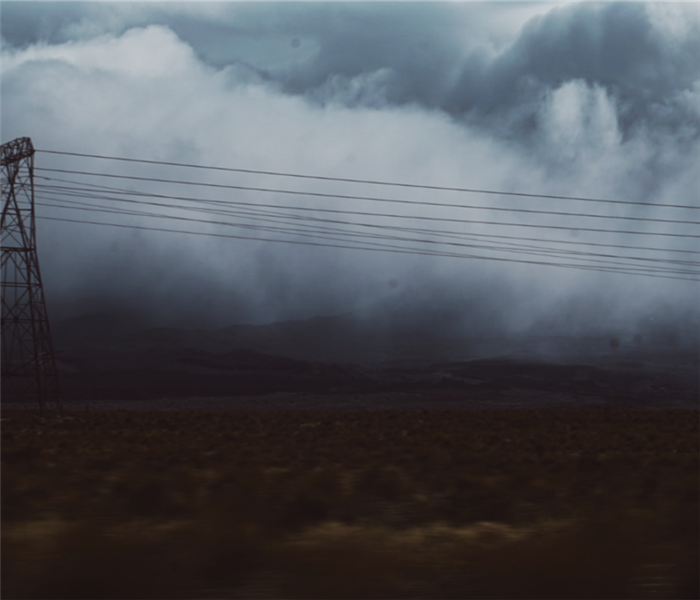 An incoming storm surrounds an open field with power lines
An incoming storm surrounds an open field with power lines
Wisconsin experienced a high volume of tornadoes this past July. According to the National Weather Service, 16 touched down in just three days. These widespread storms forged through our state with winds speeds ranging from 90 to 120 mph. The damage in most areas was catastrophic.
One of the biggest factors preventing residence from the task of recovering and assessing their property damage was the power outages. Being without power for a short or extended period can be a costly factor for some homeowners. Knowing how to prepare for a power outage can help your family salvage more of your resources.
There are several ways you can keep your homestead functioning as well as you possibly can if the power were to go out unexpectedly.
Prepare in advance for a power outage:
- Invest in flashlights, a battery-operated radio, and, of course, extra batteries. There are even lanterns used for camping that double as a phone charger. Remember to check your items occasionally to ensure they're all functioning and store them together for easy access.
- Always have bottled water and a variety of snacks that do not require refrigeration.
- An easy-to-miss but crucial consideration: if you have medication that needs to be refrigerated, remember to ask your pharmacist for information on storing it during a power outage.
Tips for your family once the power is out:
- Don't open the refrigerator or freezer door if you can help it. Refrigerated food can stay cold (and safe for consumption) for up to 4 hours, while frozen food can last up to 48 hours if the freezer is densely packed (or 24 hours if it's not as full). For more on food safety in an emergency, check out these guidelines from the USDA.
- To avoid a power surge when the electricity returns, turn off computers, TVs, and other nonessential electronics. But be sure to leave a light on so you'll know when the power is restored.
- If someone has medical equipment that requires electricity, call for help or get them to a place where the power is working.
In the aftermath of a power outage due to harsh weather, practice extreme caution if you go outside to survey the damages after a storm.
Remember that fallen trees or other wreckage can hide downed or hanging electrical wires. Always assume that a downed line is a live line and highly dangerous.
SERVPRO of West Brown County knows your family's well being is your number one priority and wants everyone to be safe. Allow us to be there with helping eliminate some of the burdens you're facing in the aftermath of any storm destruction inflicted upon your home.
We have technicians on call 24 hours a day, 7 days a week, ready to go into action when they are needed. If flood waters hit your home in the middle of the night, or a fire breaks out on Christmas Day, our technicians will be there for you to start the recovery work immediately.
If you need emergency clean up or restoration work in the West Brown County area, call us any time at, (920) 541- 2128
National Preparedness Month: Preparing Your Kids for Natural Disasters
9/16/2019 (Permalink)
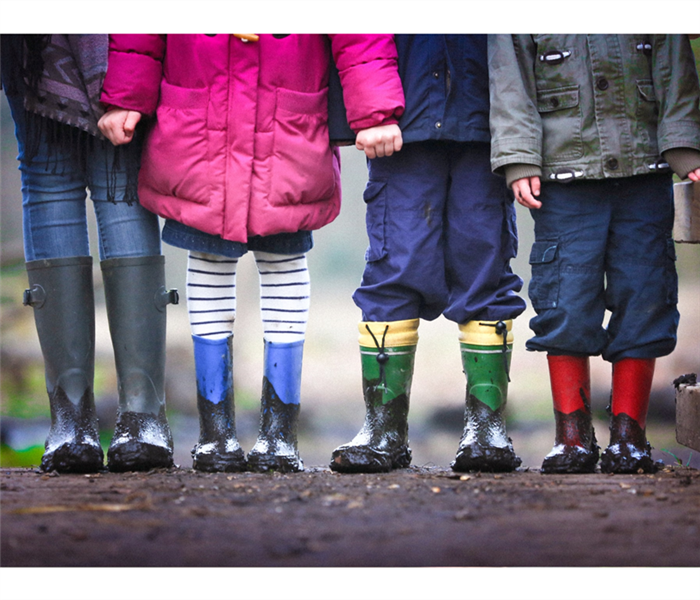 A group of four children standing outside wearing coats and rain boots
A group of four children standing outside wearing coats and rain boots
Brown County experienced more than its fair share of storms throughout this summer.
As an adult, we tend to develop ideas over the years of how we should prepare our place of residence for natural disasters that commonly frequent the State of Wisconsin. One important matter that may get overlooked during the preparation process is forgetting to include the younger members of the family as part of that procedure.
Kids and teens should learn invaluable techniques to better equip them for a variety of severe weather disturbances or everyday household disasters. Taking the proper precautionary steps to formulate an emergency plan could help reduce any occurrence of anxiety when such unexpected events transpire.
Some helpful tips on how to prepare your children for natural disasters include:
- Offer them facts on the typical weather developments for our region or emergencies that would generally involve first responders being dispatched.
- Focus on types of hazards that could affect the home: a place to seek immediate shelter in the event a tornado develops or prompt evacuation as a result of a fire.
- Create then test out your family disaster plan. Just as your child practices fire drills at school, disaster drills at home are an excellent way to review what to do during a crisis. Model the exercise for your children and then have them participate either monthly or every few months to see if revisions should be made to your established plan.
These above examples are one way to assure your loved ones every precautionary measure is being made to keep them safe during what could be an incredibly disastrous period.
Another thing you may want to implement into your planning process is a backup plan where the younger members of the family know how to best assist you if you’re distracted by certain emergency matters. You may have your hands full with trying to divert water from overflowing in your basement or distinguishing a fire that suddenly erupts from an electrical matter. Other times you may become injured and need some type of medical assistance. Knowing your kids have the right resources in place could not only help get your household back on their feet but ease their mind because you prepared them for such events.
Your families primary focus should be more on keeping everyone safe. Let the trained technicians at SERVPRO of Brown County take some of the worries off your hands by clearing out the damage to your residence.
SERVPRO of Brown County offers:
Restoration work following storms or interior damage to your home is a cornerstone of the SERVPRO business. Give our trained technicians a call at, (920) 434-8224.
Storm Damage in West Brown County: SERVPRO Is Always Here for You
9/5/2019 (Permalink)
 A residential building with rain gutters full of rain water during a storm
A residential building with rain gutters full of rain water during a storm
When you live in the State of Wisconsin, you learn to adapt to the way the seasons change faster than you can blink. One moment you're bundled up in a winter coat with at least three layers underneath it. Then the next minute, you are cranking up the air conditioner trying to keep cool because the temps reached a record high in a month that we typically experience freezing temps.
Just think about all that your house endures with those swift climate changes. We want the dwelling we live in to withstand any natural disaster. Our treasured belongings stay stored within those walls, as well as those mementos occasions we create with loved ones. Not taking all of the proper precautions to keep our home up to code could leave us without those cherished keepsakes, making new memories and at a substantial financial loss.
While various factors can damage our home's foundation - earthquakes, extreme temperatures, tree roots; moisture is the number one culprit that weakens and compromises the home's base.
Once water collects around your house from rain, snow, or burst pipes, the saturated soil around the foundation expands and shift — the pressure on the foundation walls increases and results in cracks. Leaks form allowing water to penetrate the foundation and cause electrical hazards, mold growth, and structural damage to the house.
There are a few precautionary measures you could take to lessen the chance of your home enduring such structural damages.
- Clean rain gutters: Inspect your gutters or schedule a licensed professional to clean them annually. A clogged rain gutter can send water cascading down the exterior wall, which can result in water entering the interior walls.
- Roof maintenance: Where rain is concerned, the roof is the first line of defense. Regular maintenance can preserve the life expectancy of your home's roof.
- Window repairs: Proper window installation and maintenance is imperative. Leaks in your windows could be the result of poor maintenance or missing caulking.
At SERVPRO of West Brown County, we make it OUR business to respond to storm damage immediately. If your property is struck unexpectedly by a storm or natural disaster, we will work quickly and efficiently to fix the problem and get your life back on track.
In the event of your house sustains significant weather-related damages, call our trained technicians at West Brown County SERVPRO.
We're available 24 hours a day, seven days a week at 920-434-8224.
SERVPRO of West Brown County is here to help with storm damage
8/27/2019 (Permalink)
A couple of months ago, a storm spread across our region and caused some damage in our area. Fierce winds and heavy rain left thousands without power and damage to homes. According to the WE Energies website, it was estimated that more than 70,000 customers were affected and out of power in the Green Bay area. After a storm, you may want to inspect the damage. What exactly should you look for? How can we stay safe while assess a property? Check out the tips we have provided below:
Staying safe after a storm
After a storm, you may want to evaluate the damage a storm has done to your property, here’s some tips on staying safe:
- Watch out for broken glass and nails
- Be careful of power lines, always stay at least 10 feet away and alert police and the local utility company
- It is advised that you use a flashlight instead of an open flame such as a candle
Inspecting damage on your property after storm damage
- Look for fallen branches and/or trees
- Holes in the roof
- Missing shingles
- Check your property’s windows for any cracks, dents, etc.
- Check your gutters
If you experience any type of water damage it is important to call the experts as soon as possible. SERVPRO of West Brown County is ready to restore your home or commercial property. The sooner you call us, the more we can restore such as important documents, furniture, etc.
SERVPRO of West Brown County is faster to any sized disaster
SERVPRO of West Brown County is a locally owned company so we’re also a part of the Green Bay community and we take great pride and joy helping our neighbors recover from storm damage (and other clean-ups and restorations). We’re equipped with the proper equipment to handle any disaster both in your home and commercial property.
Call us today if you need help, we’re here for you, (920) 434-8224
SERVPRO of West Brown County offers storm damage restoration
7/11/2019 (Permalink)
Wisconsin weather can sometimes be unpredictable. Weather in our community can range from a sunny day, to a downpour with heavy winds, to freezing weather and a heavy snowfall. You can go from wearing shorts, to putting on a coat. Since our weather can be unpredictable, it’s important to know what damages severe weather can cause to stay prepared.
What is a thunderstorm?
A thunderstorm is a storm in which you hear lightening. But what is the scientific definition of a thunderstorm? For a thunderstorm to be considered a “thunderstorm” there are three basic things required:
- Moisture
- Rising unstable air
- Lifting mechanism
If you see a thunderstorm approaching, you should immediately seek shelter.
What kind of damage can a thunderstorm cause?
A thunderstorm can cause a lot of damage to communities. Heavy rain, flooding, hail, strong wind gusts and lightening are all potential dangers of a thunderstorm. Rainfall from thunderstorms can cause flash flooding. Flooding can be a hazard to basements if the sump pump suddenly stops working or can’t keep up with the amount of water, thereby flooding a basement. Depending on its size, hail can cause damage to vehicles, homes and even injure animals. Strong wind gusts can blow debris, topple trees and heavy objects around causing damage to homes and businesses.
Fun fact: Light travels faster than sound so we see lightning before we hear thunder
SERVPRO of West Brown County offers storm restoration
SERVPRO of West Brown County offers storm restoration for your home or business. We’re faster to respond to an unfortunate event since we are local and open 24/7/365. You can trust the SERVPRO of West Brown team to clean up any storm damage in your home or business and make it look “Like it never even happened.”
Preparing for a storm in our Green Bay Community
7/9/2019 (Permalink)
Floods can be unpredictable and destructive. Whether a flood occurs from excessive rain, a storm, or snow melting, staying prepared can help avoid any further damage. SERVPRO of West Brown County is ready to help in case of a flood emergency in your home or business. Here are some tips to prepare ahead of a storm.
Preparing for a storm
If you think a storm may be approaching, turn on the TV to the appropriate channel to watch for weather alerts. You can also sign up for text weather alerts sent to be sent to your phone. Do not drive on flooded roadways. If a road is flooded, or starting to flood, remember “Turn around, don’t drown!” If you hear thunder, seek shelter immediately.
Consider an emergency kit
You may want to consider organizing your family an emergency kit. Here’s a list of things you may want to include in your emergency kit:
- First aid kit
- Prescriptions and important medicines
- Credit cards and cash
- A change of clothes
- Important documents
- Battery powered flashlight
- Extra batteries
- Blankets
- Water
- Nonperishable food
Fast Response
Whether your basement has flooded, or you have a broken pipe, SERVPRO of West Brown County is ready to help. A fast response with a company who has years of experience and specialized equipment is what you can expect of SERVPRO of West Brown County. We are also open 24/7/365- even on holidays!
When Storms or Floods hit the Green Bay area, SERVPRO is ready!
3/27/2019 (Permalink)
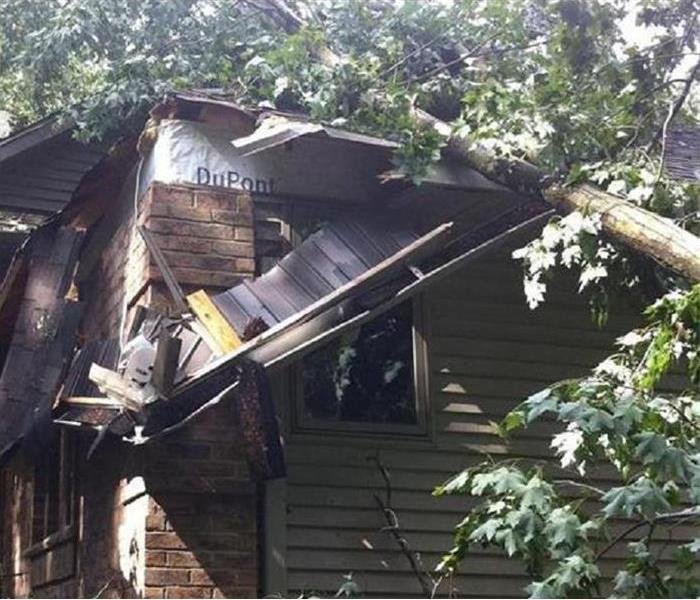 This photo shows storm damage our team helped clean up in the Green Bay area.
This photo shows storm damage our team helped clean up in the Green Bay area.
SERVPRO of West Brown County specializes in storm and flood damage restoration. Our crews are highly trained and we use specialized equipment to restore your property to its pre-storm condition.
Faster Response
Since we are locally owned and operated, we are able to respond quicker with the right resources, which is extremely important. A fast response lessens the damage, limits further damage, and reduces the restoration cost.
Resources to Handle Floods and Storms
When storms hit the Green Bay area, we can scale our resources to handle a large storm or flooding disaster. We can access equipment and personnel from a network of 1,650 Franchises across the country and elite Disaster Recovery Teams that are strategically located throughout the United States.
Have Storm or Flood Damage? Call Us Today 920-434-8224.
March is American Red Cross Month
3/5/2019 (Permalink)
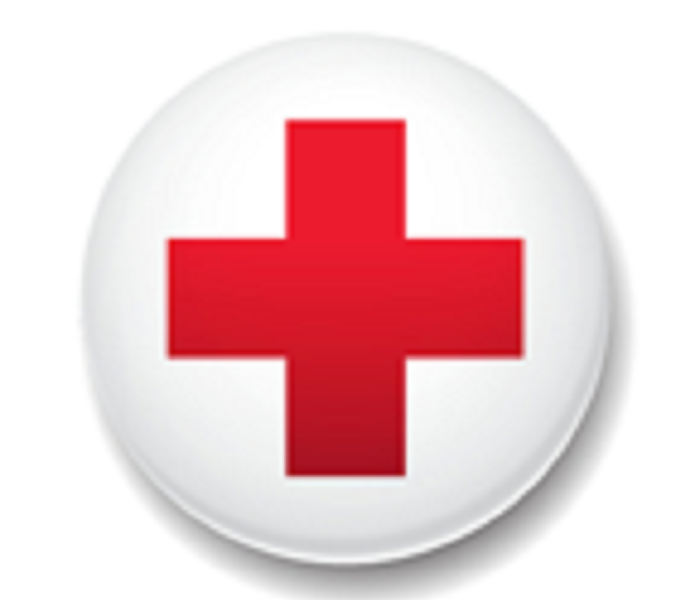 Courtesy: American Red Cross
Courtesy: American Red Cross
When disasters strike anywhere in the nation, you can almost always count on the fact volunteers from the American Red Cross will mobilize there to help with recovery.
The United States honors the organization every year when the President declares March National Red Cross Month.
The American Red Cross was founded in 1881 and is a charitable organization that relies on donations and volunteers to carry out their mission.
Red Cross volunteers travel near and far to help people who’ve been affected by natural disasters like fires, floods, hurricanes and tornadoes.
The organization is also well known for other work like collecting blood donations, offering military families support and training for certifications in fields like CPR, lifeguarding and first aid.
The American Red Cross is part of the Global Red Cross Network, which is the world’s largest volunteer network. There are Red Cross organizations in 187 individual countries.
This month, we honor those Red Cross volunteers who help carry out the organization’s mission. They are “everyday heroes,” who are making the world a better place.
For more information on the Red Cross and how you can get involved, you can visit redcross.org.
Winter Weather in Wisconsin
2/21/2019 (Permalink)
If you’re a Northeast Wisconsinite we don’t have to tell you the weather this winter has been a bit, shall we say, crazy?
We’ve experienced snow storms one day, sub zero temps the next, temperatures rising to the forties, snow melting, freezing and falling again. It’s enough to make your head spin!
February has been particularly bad in terms of snow storms. It’s as if we barely shovel out from one storm and the next has already begun.
While Wisconsinites are no strangers to the season, the wintry weather can pose serious challenges to your home or business. Your property can be damaged by the heavy snow, winds and water that come with the rapid changes in weather.
This blog contains a few reminders about the hazards of the season and what you can do to prevent any damage.
First off, frozen, bursting pipes are a big concern as temperatures rise and fall rapidly. Pipes are likely to freeze when the temperatures drop below 20 degrees and Team SERVPRO of West Brown County has answered MANY calls for flooding thanks to frozen pipes over the last few weeks.
Pipes are more likely to freeze if they are not insulated and if they are in colder areas of your home or business, like the basement, or even outside.
Outdoor pipes most likely to freeze include:
- Outdoor hose bibs
- Swimming pool supply lines
- Water sprinkler lines
Pipes in unheated or partially heated areas are also at risk of freezing, including:
- Basements
- Crawl spaces
- Garages
So, now is the time to make sure you’re keeping those pipes warm, running water through them or insulating them if need-be. If you notice water pressure dropping, that’s a sign a pipe is in trouble. Take care of it immediately, because the damage a burst pipe causes can be very serious.
We’ve also warned you about ice dams and now is a good time to remind you about those. Ice dams form on your roof when snow melts on your warmer attic and then freezes on your colder gutters and eaves. Those frozen dams can damage your roof and gutters and/or push water into your home, causing flood damage.
One good way to prevent ice dams is to use a snow rake to pull ice and snow off your roof before it has the chance to cause any damage.
That brings us to our third reminder, snow itself can simply become too heavy as it builds up and cause your roof to crack, lose shingles, or even collapse.
A snow raking will help prevent this too!
Some winter storms come with high winds, which can obviously pose problems to your properties. Whether the wind causes direct damage to your home or business, or sends debris like tree limbs into your home or business, there is the potential for issues there.
And finally, when the temperatures rise again, all the snow we’ve gotten (and continue to get!) will melt and that extra water has to go somewhere. Six inches of snow will create about one inch of water once melted and that can cause trouble.
The excess water can make lakes and rivers rise, which can cause flooding. The water can also make its way into your basement all on its own.
So, now is a good time to make sure your sump pump is working. You can also work to clear the snow from around your foundation before it melts and make sure your gutters are clear and draining away from your home or business!
Team SERVPRO of West Brown County cleaned up a lot of flooded basements in the Green Bay area when we had those few days of rain and snowmelt a few weeks back. We know how fast damage can happen, so if you can take a few steps to prevent that damage, it’s definitely a good idea.
However, if something goes wrong and you need our help thanks to old man winter, we are here for you. Call us 24 hours a day, seven days a week at 920-434-8224.
Explaining Winter Weather Alerts
2/13/2019 (Permalink)
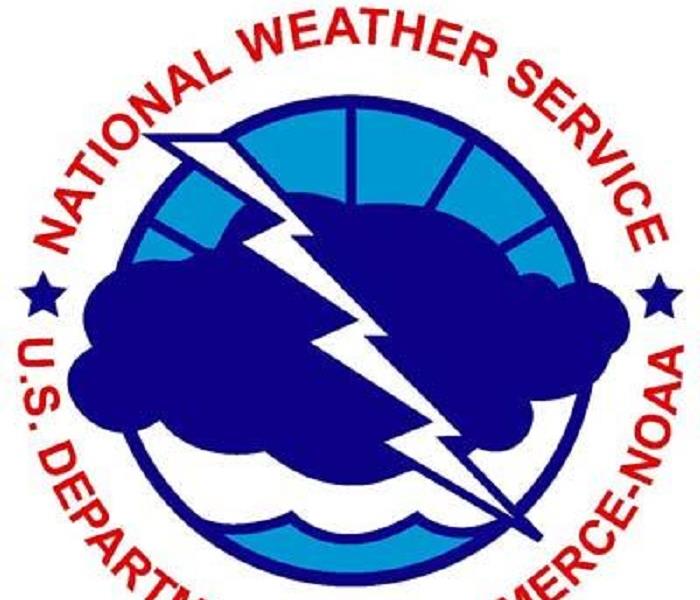 National Weather Service Logo
National Weather Service Logo
The weather this winter has been nothing short of wild. Wisconsinites have dealt with snow storms, rain and plunging and rising temperatures.
Since winter conditions can be dangerous, it’s a good idea to pay attention to the forecasts and make any preparations you can to stay safe.
But, in order to know how to prepare, you need to know what the forecasts are telling you. That’s where things like watches and warnings come into play.
We learned just what each watch and warning means from the National Weather Service (NWS) and we’d like to share that info with you!
According to the NWS there are Winter Storm Watches and Warnings, Winter Weather Advisories, Blizzard Warnings and Ice Warnings. Here’s what they mean:
- Winter Storm Watch – the NWS says, “A Winter Storm Watch is issued when there is the potential for significant and hazardous winter weather within 48 hours. It does not mean that significant and hazardous winter weather will occur...it only means it is possible.” (That hazardous winter weather can include snow, ice, sleet, blowing snow or a combination of these hazards.)
- Winter Storm Warning – according to the NWS, “A Winter Storm Warning is issued when a significant combination of hazardous winter weather is occurring or imminent.”
- Winter Weather Advisory – the NWS explains this as, “A Winter Weather Advisory will be issued for any amount of freezing rain, or when 2 to 4 inches of snow (alone or in combination with sleet and freezing rain), is expected to cause a significant inconvenience, but not serious enough to warrant a warning.”
- Blizzard Warning – the NWS says, “A Blizzard Warning means that the following conditions are occurring or expected within the next 12 to 18 hours: snow and/or blowing snow reducing visibility to 1/4 mile or less for 3 hours or longer and sustained winds of 35 mph or greater or frequent gusts to 35 mph or greater.”
- Ice Warning – According to the NWS, this is when ¼ inch accumulation or more of ice is expected.
All of these alerts can signal dangerous conditions. So, if you see them in the forecast, take precautions! Winter isn’t over yet. Be safe.
Winter Prep Profile: Your Car
12/18/2018 (Permalink)
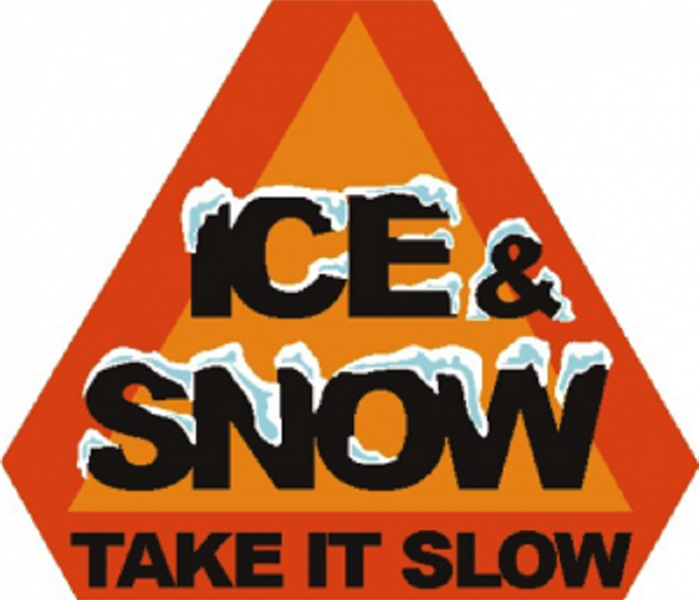 Graphic courtesy of clearroads.org.
Graphic courtesy of clearroads.org.
It’s no secret winter driving conditions can be downright hazardous in Northeast Wisconsin. So, it’s best to play it safe if you plan on hitting the road during any storms this season.
SERVPRO of West Brown County wants you to arrive at your destination safely and that’s why our first piece of advice is to make sure your car is in good condition (if you haven’t already, of course!). That means ensuring everything is working properly from your brakes to your windshield wipers. If you’re not much of a mechanic yourself, it’s a good idea to have a professional check everything out for you, just to be on the safe side!
Now, making sure your vehicle itself is winter-ready is only the first step in seasonal car preparation. This is the time of year you should have an emergency kit in your car at all times. Unsure of what goes in an emergency kit? The American Red Cross has this handy checklist (make sure to bring enough of all of these supplies for every person you’re traveling with):
- Blankets or sleeping bags
- Rain gear and extra sets of clothing like socks, mittens and hats
- Newspapers for insulation
- Plastic bags for sanitation
- Non-perishable food items, like granola bars and nuts
- Bottled water
- A charged cell phone
- A full tank of gas
The Red Cross also advises driving during daylight hours, leaving your headlights on, leaving plenty of space between your car and the other vehicles on the road and taking your time.
If the worst happens and you become stranded during winter weather, the Red Cross asks you to be safe and smart until help arrives. Here are steps you should take:
- Call for help and stay in your car until help arrives.
- Hang a brightly colored cloth on your antenna (preferably red).
- Run the engine occasionally to keep warm. Turn on the engine for about 10 minutes every hour.
- Leave the overhead light on when you have the engine running, in order to be seen.
- Do light exercises to keep your circulation moving.
- If more than one person is in the car, take turns sleeping.
- Huddle together for warmth.
- Drink fluids to avoid dehydration.
- Avoid overexertion. Wait for help instead of shoveling snow or pushing your car.
In Northeast Wisconsin we’re not strangers to the dangers of winter weather. But, that doesn’t mean we’re always prepared for unpredictable conditions. As always, Team SERVPRO of West Brown County asks you to be safe!
Winter Prep Profile: Your Pets
12/18/2018 (Permalink)
 Photo courtesy of the American Red Cross.
Photo courtesy of the American Red Cross.
Our final Winter Prep Profile for the month deals with our four-legged friends. Yes, we’re talking about the furrier members of our families, our pets!
It’s no secret that at SERVPRO of West Brown County we consider our pets family, and we know many of you do too. So, it’s important to consider how to keep them safe and sound during the winter months.
Even though most pets like dogs and cats come equipped with their own fur coats, they can be susceptible to the cold, just like us humans. The American Red Cross says it’s important that you prepare your pets if they have to go outside, even for a little while. The Red Cross advises pet sweaters and booties for long walks to keep them warm and brining any outdoor pets inside during especially cold or snowy days. Booties are also a good idea to keep your pets paws safe from salt and other snow-melting chemicals. If your pet gets snow-melt on their paws, wipe them off before they lick their paws.
If you cannot bring an animal inside, you must ensure it has a proper shelter. According to the Red Cross, the shelter must reach these specifications:
- The enclosure must be dry and draft-free.
- The enclosure must be large enough for the animal to turn around and lie down, but small enough to hold its body heat.
- The floor must be raised a few inches off the ground.
- You should cover the floor with clean blankets, wood shavings or straw for added warmth.
- Ensure the animal has unblocked access to food and water (make sure the water does not freeze!).
- Keep the enclosure turned away from the wind.
- Cover the door with heavy plastic or burlap.
Wisconsin’s winter weather can become down-right dangerous if we’re not careful. So, SERVPRO of West Brown County asks you to please protect yourself and ALL the members of your family this time of year!
Preparedness Profile: Sound the Alarm
9/19/2018 (Permalink)
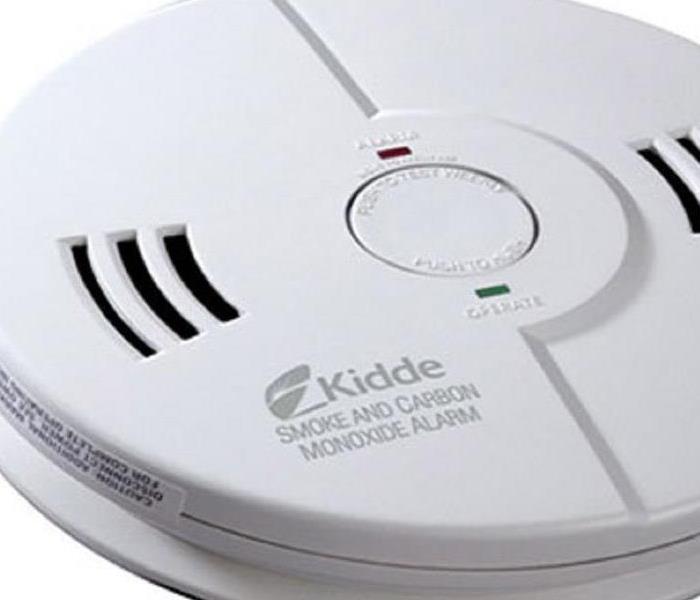 Smoke alarm photo courtesy of the CDC.
Smoke alarm photo courtesy of the CDC.
There is no reason to be alarmed by this week’s Preparedness Profile! We’re simply talking about some of the important alarms/detectors you should have in your home to ensure your family’s safety.
Those include: smoke, carbon monoxide and radon detectors.
At this point, it’s likely you have at least one smoke detector in your home. These are designed to sound an alarm when smoke is in the vicinity of the detector. However, one alarm is not enough to ensure your safety, especially if that device is not working.
The National Fire Protection Association (NFPA) has a few tips when it comes to installing and maintaining smoke alarms in your home:
- Install smoke alarms in each bedroom.
- Install smoke alarms outside each sleeping area.
- Install smoke alarms on each level of your home, including your basement.
- On levels without bedrooms, install alarms in living rooms or dens and/or at the bottom of staircases.
- Smoke alarms should be mounted high on walls or on ceilings.
- Smoke alarms should be at least 10 feet from any cooking appliances to prevent them being set off by cooking.
- Test your alarms once a month to ensure they’re working.
- Change batteries at least once a year. If you have ten-year battery-operated alarms, make sure to buy new ones every ten years.
- The alarms will chirp if the batteries are low.
- Keep alarms clean and follow all manufacturer’s instructions for maintenance.
According to the NFPA, about 3 out of every 5 fire-related deaths occur in homes with no working smoke alarms.
The bottom line: smoke alarms save lives. So, make them a top priority in your home.
Now we move on to carbon monoxide detectors. Carbon monoxide (CO) is a colorless, odorless gas that is known as the “invisible killer.” The NFPA says the deadly gas is created when fuels like wood, propane and gas burn incompletely.
A large amount of carbon monoxide can kill a person in a short amount of time, while a small amount of the gas can kill a person over a longer amount of time. This is why CO detectors/alarms are so important for your home.
The tips for CO alarms are similar as those for smoke alarms. The NFPA advises:
- Install CO alarms in a central location outside each sleeping area.
- Install CO alarms on every floor of the home, including basement.
- Follow manufacturer’s instructions for installations and placement.
- Test batteries once a month, replace yearly (or if the alarm chirps, signaling low battery)
- If the alarm sounds immediately move all people and pets out of the home and call for emergency responders.
Remember: because carbon monoxide is invisible to the senses you will not be able to tell if It’s in your house. That means you need an alarm to do that for you!
And finally, we are talking radon. Radon is probably the least talked about behind smoke and carbon monoxide, but it poses significant dangers too.
According to the CDC, radon is the second leading cause of lung cancer after cigarette smoking, resulting in about 20,000 deaths every year.
Like CO, radon is a colorless gas that you cannot see or taste. The CDC explains that radon occurs naturally in the ground and is created when radioactive metals like uranium, thorium, or radium break down. The gas can then seep into your home through cracks and crevices.
The CDC says you should test your home for radon levels. You can do so using a kit, which you can buy online or in most home improvement stores. If your test shows high radon levels you can make changes to your home to lower those levels, like sealing up cracks. The CDC does recommend hiring a professional to make those changes, however, if you’re not an expert yourself.
These are just three easy things you can do to ensure your home is safe for you and your family. So, take the opportunity to get into the spirit of National Preparedness Month and make sure you have all the smoke and carbon monoxide detectors your home needs and do a radon test for good measure!
Remember, you’ll have a lot less cause for alarm in the future if you take the steps to prepare now!
Preparedness Profile: If Disaster Strikes, Will You Be Ready?
9/12/2018 (Permalink)
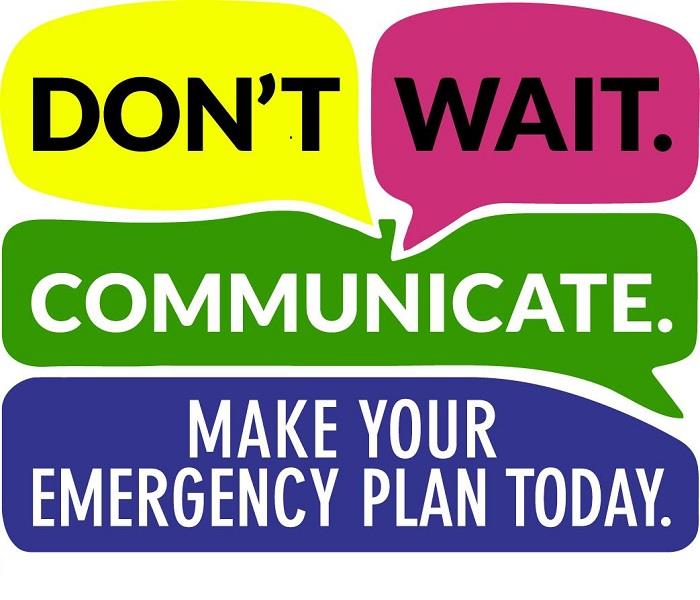 Be prepared.
Be prepared.
In our line of work we know disasters can strike at any time and they can often leave devastation behind.
So, in this week’s Preparedness Profile, we’re asking you this question: If Disaster Strikes, Will You Be Ready?”
We know it’s not always easy to answer ‘yes’ and mean it fully, but there are some easy steps you can follow to be as ready as possible:
- Sign up for local alerts – You can get often get text messages, emails or phone calls about emergencies from your city or county. You can also sign up for alerts or download smart phone apps from organizations like FEMA and the National Weather Service.
- Develop and test emergency plans – Know how your family will get out of the house in case of a fire or flood, know where your family will meet if you can’t go home, talk with neighbors about how you can work together. Run drills of all of these plans.
- Assemble emergency supplies – Have a kit ready with things like non-perishable food, water, medications and important documents.
- Know your local hazards – What are the risks where you live? How can you prepare for those specific risks? For example, in Wisconsin we experience natural disasters like blizzards, tornadoes and floods. How would you react in each of those unique situations?
- Collect and safeguard critical documents – Have copies of documents like birth certificates, passports, car titles and house deeds in a safe location, out of harm’s way. Know where they are so you can grab them and go at a moment’s notice.
- Protect your property – Take photos of your property and valuables for insurance purposes, make any necessary improvements to your property to make it safer in case of disaster and make sure you have all the insurance coverage you need.
At SERVPRO of West Brown County our business is helping people recover after disasters of all kinds from storms, to fires, to floods. We want you to stay safe and protect your family and property.
If the worst happens and you need our help in the wake of any emergency, remember we are a locally-owned business with the backing of a billion-dollar brand. There are 1,700 SERVPRO franchises and they are ready to assist us and you, should the need ever be that great.
Be safe. Be prepared.
And know you can get in touch with us, day or night, at 920-434-8224.
Hard Rain Means Hard Work
9/5/2018 (Permalink)
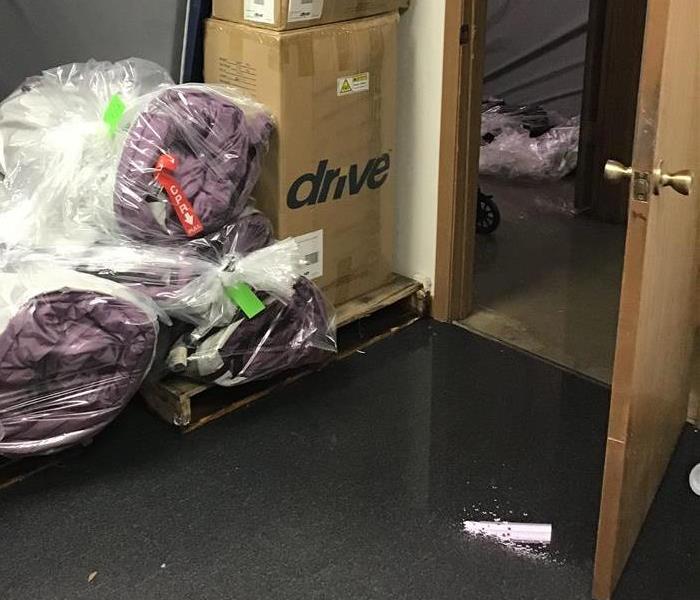 A photo from just one of the businesses our team has been working at during the rain storms.
A photo from just one of the businesses our team has been working at during the rain storms.
If you live or work in Northeast Wisconsin, you’ve no doubt been affected in some way by the recent, intense rain storms we’ve been experiencing. Whether it’s a slow commute due to flooded streets, or worse, flooding in your own home or business, it’s been a difficult few weeks for everyone in the Green Bay area.
It’s no surprise that, in our line of work, the SERVPRO of East Brown County Team has been faced with a lot of hard work thanks to the extreme weather.
We have received numerous calls each day since the end of August from people across the area asking for help with flooding in homes and businesses. Our technicians have been working around the clock to help those who need it. While many enjoyed end of summer barbecues and parties over the Labor Day weekend, we had crews drying up flood waters without a day of rest.
The schedule became so hectic at times that even the office workers AND the franchise owners have been working alongside technicians to get the jobs done. At those times, the only person left in the office was our office manager who stayed behind to answer the never-ending calls and solve the maze of scheduling issues.
At one point we even had to request additional drying equipment, like fans, from out of state to keep up with the demand. This is due to the fact all of Wisconsin has been experiencing flooding, with southern parts of the state even worse off than our own.
And even with all this labor, we have a waiting list of people who still need help. Believe us, if you are on that list we have not forgotten about you. We are doing our very best to ensure we can assist as many people as possible, as quickly as possible, without sacrificing any of the quality of our work.
We know that as hard as our crews are working, the emotional and physical toll this devastation has taken on our clients is even harder to deal with. We want those who are struggling right know to know that we are here for you. We will do our very best to see you through this extremely difficult time and get your life and property back to normal again.
We are not sharing this story to complain about the job our team needs to do right now, because our team doesn’t complain. We tackle each project in front of us until it is complete, because we love the work we do. We love helping people who need it. We’re in the business of being there for you when you need us most.
Pet Evacuations: What You Need to Know
6/28/2018 (Permalink)
 Boo Bogenschuetz
Boo Bogenschuetz
We recently wrote a blog post about keeping your pets safe in case of house fires. In this post we’re taking a look at what you need to know and how you can prepare in the event you and your pets need to evacuate your home.
There are many reasons you might need to evacuate your home including fires, floods and storms.
If you must leave and go to a shelter it’s important to understand, you most likely will not be able to bring pets with you to a public shelter. There are usually separate shelters set up for pets.
Regardless, it’s a good idea to prepare an emergency evacuation kit for your pets in case you need to leave your home quickly.
The National Fire Protection Association (NFPA) has a list of items you will want to include in your pet’s evacuation kit:
- Copies of Vaccination Records
- Medication or a List of Needed Medications
- Lists of Any Special Needs or Allergies
- Ownership Records (things like adoption paperwork, microchip paperwork registration papers, or at least photos of you with your pets)
- Leashes, Harnesses, Collars and/or Carriers
- Pet Food and Treats (enough for each pet for 3 to 7 days)
- Water (enough for each pet for 3 to 7 days)
- Bowls
- Cat Litter and Box
- Dog Waste Bags
- Toys
- Blankets
- A Pet First Aid Kit (including cotton bandage rolls, bandage tape, scissors, antibiotic ointment, medical-type gloves, isopropyl alcohol and saline solution)
- Cleaning Supplies (in case your pet has an accident)
- List of Important Phone Numbers (including your veterinarian, local animal shelters, local pet-friendly hotels, local animal control, local pet boarders)
The NFPA advises keeping all of this in a large, waterproof, plastic tote in a convenient place. You’ll want a spot that stays at a stable temperature to prevent food and water from freezing or spoiling.
The NFPA says you should also keep track of any possible natural disaster predictions in your area and ensure you know where your pets are in case disaster strikes and you need to leave fast.
At SERVPRO of West Brown County, our pets are our family and we know it’s the same for many families in the Green Bay Area. Be sure to plan ahead to keep those four-legged family members safe!
Explaining the ERP: Emergency Readiness Profile
6/12/2018 (Permalink)
It’s estimated 50% of businesses that are hit with a disaster never reopen. And you can never predict when or where a disaster will strike. That’s why preparing for the worst can be such a valuable step to take.
One of the services our marketing team provides can help you prepare your business for the worst. That service is called an “Emergency Readiness Profile, or ERP.” It’s FREE and doesn’t take much of your time.
The goal of the ERP is to compile a long list of information that you will need following a disaster like, let’s say, a tornado that damages your business and causes flooding. The information compiled includes emergency phone numbers to call, locations in the building to turn off (or on) water and electrical supplies and steps to take to start cleaning up the damage. The profile also includes photos that go along with the information showing exact locations of things like entrances and exits, locations of water and electrical shut offs and any security codes.
SERVPRO’s marketing team members will walk through your business with you to perform the ERP free of charge. It takes just an hour or two of your time.
Once the ERP is complete, SERVPRO will be able to provide you with digital copies (via email or flash drive), as well as a hard copy. This way it will be accessible the moment you need it.
The idea behind the ERP is that it will jumpstart the cleanup and recovery process so that business downtown is at the bare minimum. (SERVPRO’s contact information will also be in there so we can get to the scene ASAP, should the damage require our services!) The goal of the ERP is to ensure YOUR business is in the 50% that DO reopen should the worst happen.
If you’re interested in an ERP, please give SERVPRO of West Brown County a call at 920-434-8224!
Putting it All Back Together Again
5/3/2018 (Permalink)
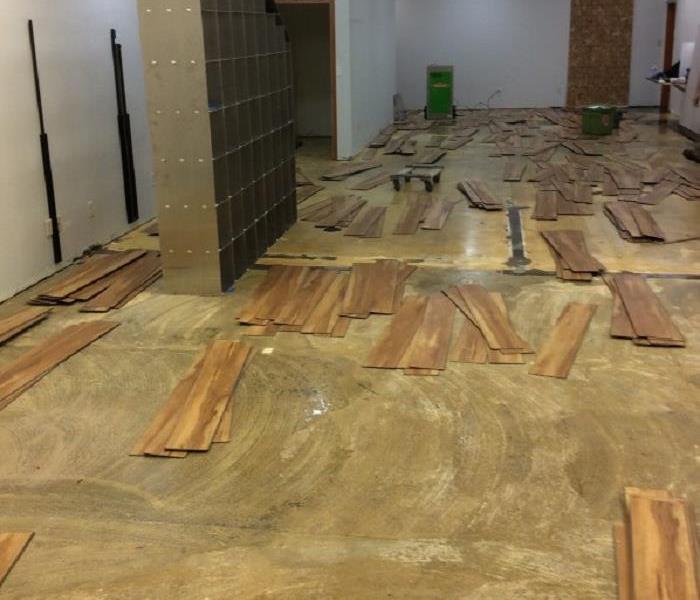 This photo shows the office after we removed the floorboards and before we got everything completely dry.
This photo shows the office after we removed the floorboards and before we got everything completely dry.
In Mid-April the Green Bay area was hit by a blizzard. The storm left about two feet of snow all over.
This led to many calls to SERVPRO of West Brown County for issues like broken sump pumps and water damage. However, one call was particularly interesting.
A commercial property was stuck with that wet, heavy snow on its roof. The challenge of holding that weight was too much for the roof and a section collapsed. That collapse caused a broken sprinkler head. Those combined led to water all over the building, including the office.
SERVPRO of West Brown County came in to take care of that water.
Our crews removed everything from the office: we took down cubicles and removed floorboards. Then the team brought in equipment, like our fans and dehumidifiers, and got everything dry. We also got rid of any debris from the incident.
After the drying process was done, we put everything back together again. That required rebuilding the office from, almost, the ground up. That entailed replacing the floorboards, putting the cubicles back together and moving all of the furniture and other equipment back in.
Once we were done the office was as good as new once more.
The entire process took only days. We were called in Monday morning for the water damage and everything was back in place by Friday afternoon.
This story is just one example of how SERVPRO of West Brown County works in an efficient, fast and professional manner. Our goal is to get your business, or home, back in order quickly and at the lowest cost with the best work possible.
For any type of water, fire, mold, storm, biohazard or crime scene clean up and/or restoration we are here for you. Reach us any time at 920-434-8224.
First Comes the Blizzard, Then Comes the Flood
4/18/2018 (Permalink)
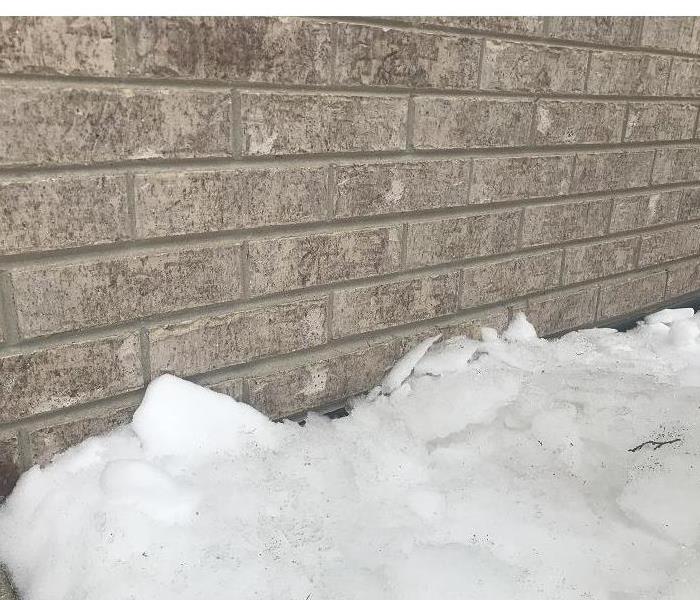 Be sure to shovel snow away from the foundation of your property to try to keep water from getting inside as the snow melts.
Be sure to shovel snow away from the foundation of your property to try to keep water from getting inside as the snow melts.
As you travel around Northeast Wisconsin it’s impossible to miss the snow piles and drifts climbing several feet high. Thanks to a spring blizzard, communities across the area are dealing with the aftermath of about two feet of the pesky precipitation.
For the first few days, clearing snow from driveways and sidewalks has taken up most home and business owners’ time and concerns. However, with warmer temperatures in the forecast, the piles of snow will soon be turning into puddles, LARGE, FLOWING puddles of water.
If you’re concerned about the snow or the water damaging your property, SERVPRO has some advice to try in the coming days:
- Prevent roof collapse: use a snow rake to clear your roof or hire a professional to shovel it.
- Prevent ice dams: keep your attic cool, significantly cooler than the rest of your home, to ensure the roof stays cool.
- Clear snow: shovel snow away from your foundation, sweep snow away from doors and windows.
- Clear drains: unclog snow from drainage pipes and catch basins to ensure water can flow freely away from your property.
- Check your sump pump to be sure it’s working properly.
- Rearrange basement storage: clear areas around appliances, put anything valuable or that cannot get wet up off the ground.
SERVPRO of West Brown County has been busy this week responding to homes and businesses that have experienced damage thanks to the blizzard. Our team is ready to help you too if you experience any kind of collapse or water damage from the storm or the flood that is likely to follow. You can reach us 24 hours a day at 920-434-8224.
Getting Serious About Severe Weather
4/9/2018 (Permalink)
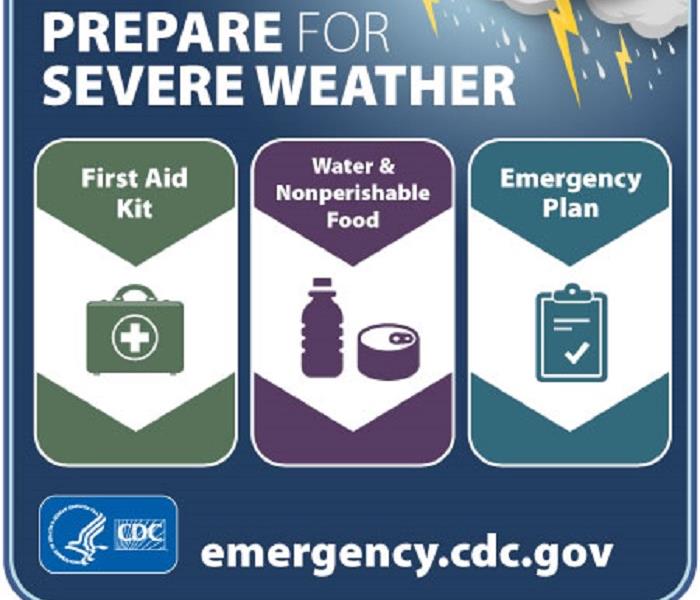 A CDC graphic with reminders about preparing for and staying safe during severe weather.
A CDC graphic with reminders about preparing for and staying safe during severe weather.
The term “severe weather” covers a whole lot of activity that can affect people across the country on any given day, at any given time.
According to the National Oceanic and Atmospheric Administration (NOAA), Americans deal with thousands of these weather events yearly.
Here’s a quick look at some of NOAA’s numbers for an average year:
- 10,000 severe thunderstorms
- 5,000 floods or flash floods
- 1,300 tornadoes
- 2 land-falling, deadly hurricanes
- Approximately 98% of all Presidentially-declared disasters are weather-related
- 650 deaths
- $15 billion in damage
To be prepared for severe weather, it helps to first know the hazards that can affect you, your family and your property.
In the Green Bay area, the National Weather Service (NWS) says we’re at risk for severe thunderstorms, tornadoes, flooding and, of course, winter storms. You’ve probably experienced a few of these in your time here (we know we have!).
At SERVPRO we recommend being prepared for the worst as we head into the warmest months of the year. According to the NWS, we’re much more likely to see those severe thunderstorms, floods and tornadoes during the spring and summer (although they can strike any time!).
To prepare we advise getting a NOAA weather radio and taking a look at the FEMA app, which we discussed in a previous blog post. That way you can hear about any watches or warnings headed your way and make sure to seek safe shelter.
It’s also a good time to come up with an emergency plan for your family and your business, put together or buy an emergency kit and keep important papers and valuables in a safe place.
SERVPRO also advises that you spread the word to your friends and family once you have your own plans in place. Post on your social media accounts like Facebook and Twitter that you have plans for staying during severe weather. Your good example could lead others to do the same.
If storms or floods come your way, remember SERVPRO of West Brown County can always help you out in the aftermath. We are here for your storm and water damage recovery needs. Just pick up the phone and dial 920-434-8224.
Just please be sure to take care of yourself and your family first.
Illuminating: Lightning Safety
4/8/2018 (Permalink)
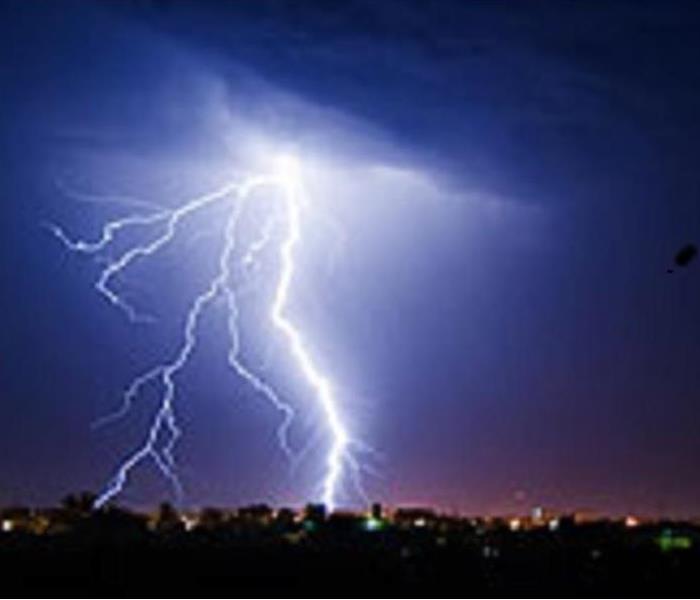 A photo showing a lightning strike from the Centers for Disease Control and Prevention.
A photo showing a lightning strike from the Centers for Disease Control and Prevention.
Did you know lightning strikes occur in the United States about 25 million times each year?
That statistic is according to the National Weather Service, or NWS, and is especially important to think about this time of year. According to the NWS, lightning is more likely to strike during the summer months, although it can happen any time of year.
The NWS says about 47 people, on average, are killed by lightning strikes, with hundreds more being injured.
Fortunately, there are ways to keep yourself safe.
If you’re able, the first piece of advice is to find shelter, preferably inside your own home.
If you are at home, the National Weather Service has several tips to stay safe:
- Stay off corded phones (you CAN use cell phones).
- Avoid plumbing: do not take a shower or wash your hands.
- Stay away from windows and doors.
- Do not lie on concrete floors or lean against concrete walls.
- Bring your pets inside.
- Remember that typical surge protectors will NOT protect against surges caused by lightning strikes.
If you are unable to get to shelter, the NWS advises you take these steps:
- Avoid open fields and hilltops.
- Stay away from tall, isolated trees or objects
- Stay away from water.
- Try to get into a low-lying area or keep heading toward shelter.
- If you’re in a group, spread out to avoid a strike hitting multiple people.
Lightning is hotter than the surface of the sun, reaching temperatures of around 50,000 degrees Fahrenheit.
And that hot, hot heat CAN cause fires. About 24,600 fires are caused by lightning in the United States each year, according to the NWS. Of those, about 4,400 are house fires.
In our line of work at SERVPRO of West Brown County we know just how much damage house fires can do. They can be devastating for families.
It’s unfortunate we know the damage, but luckily, we also know how to fix a lot of that damage. Our crews have the knowledge and experience to help you recover if the unthinkable happens. Just give us a call at 920-434-8224.
And always remember, despite the old saying, lightning can and often DOES strike the same place twice.
Preparing for the Worst: the FEMA App
4/6/2018 (Permalink)
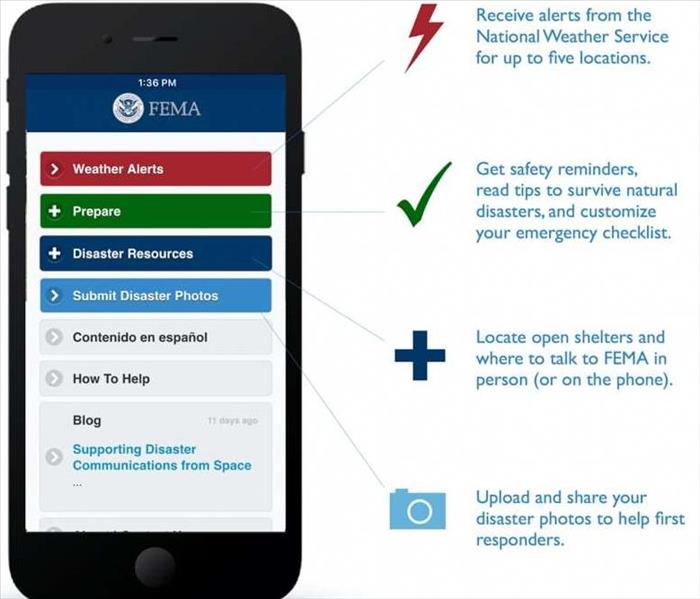 A photo of the app from FEMA that shows the front page and the features it offers.
A photo of the app from FEMA that shows the front page and the features it offers.
Spring has officially sprung (although some days the weather doesn’t quite feel that way!) and once spring has arrived, severe weather is often just around the corner. Are you prepared?
One tool we like at SERVPRO of West Brown County is the FEMA app. The cell phone app is free for iOS and Android devices and comes with a lot of cool features to help keep you safe in any kind of disaster.
The first feature provides weather alerts. You can input up to five different locations in the app to keep track of any alerts for severe weather watches or warnings in those areas.
The app also helps you get ready in the event a disaster should strike. It provides emergency safety tips and reminders, gives a checklist for building an emergency kit and allows you to set up an emergency meeting place with your loved ones.
Under the safety tips feature there is a laundry list of different topics the app provides information for. Just a few of those examples are tornadoes, house fires, floods and even cyber security.
If you end up experiencing a disaster, the app has more features that allow you to apply for assistance online, find a shelter and talk directly to someone at an area disaster recovery center.
The app also gives you the ability to share any disaster photos you might take, connect to FEMA’s Blog and call 911. The photos you share can help first responders and emergency managers in their recovery efforts.
With spring and summer often bringing severe weather, it certainly can’t hurt to be prepared and have prior warnings.
And while we’re on the subject of warnings, what’s the difference between a storm watch and a storm warning?
According to the National Weather Service, a severe thunderstorm or tornado WATCH is put out when there is a POSSIBILITY of a severe thunderstorm or tornado in that area. The WATCH does not mean the storms will actually happen.
The National Weather Service says a severe thunderstorm or tornado WARNING is put out when severe storms are actually occurring in that area, or tornadoes are imminent.
And if a disaster should strike, affecting your property. Remember, SERVPRO of West Brown County can help in the recovery efforts. We can repair storm damage and remediate any flooding or fire damage that might result. Call us anytime day or night at 920-434-8224.
When Storms or Floods hit DePere, SERVPRO is ready!
7/18/2017 (Permalink)
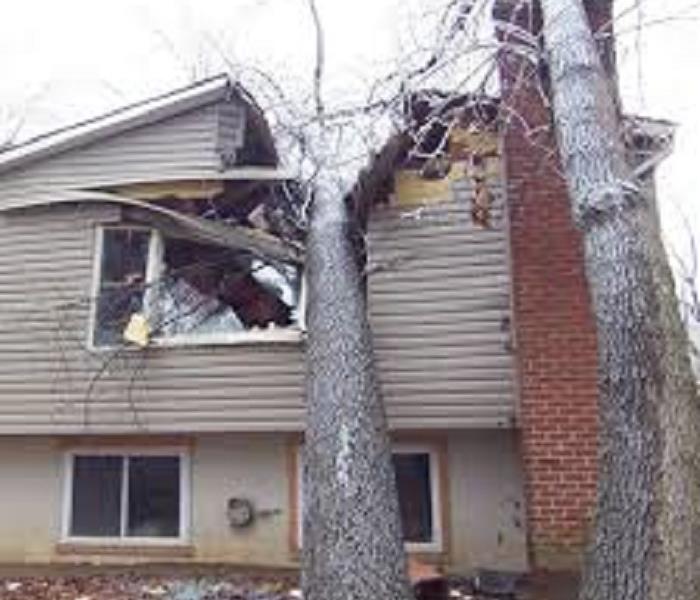 Our highly trained crews are ready to respond 24/7 to storm or flood damage in DePere.
Our highly trained crews are ready to respond 24/7 to storm or flood damage in DePere.
SERVPRO West Brown County specializes in storm and flood damage restoration. Our crews are highly trained and we use specialized equipment to restore your property to its pre-storm condition.
Faster Response
Since we are locally owned and operated, we are able to respond quicker with the right resources, which is extremely important. A fast response lessens the damage, limits further damage, and reduces the restoration cost.
Resources to Handle Floods and Storms
When storms hit DePere and surrounding communities we can scale our resources to handle a large storm or flooding disaster. We can access equipment and personnel from a network of 1,650 Franchises across the country and elite Disaster Recovery Teams that are strategically located throughout the United States.
Have Storm or Flood Damage? Call Us Today 920-434-8224



 24/7 Emergency Service
24/7 Emergency Service
























